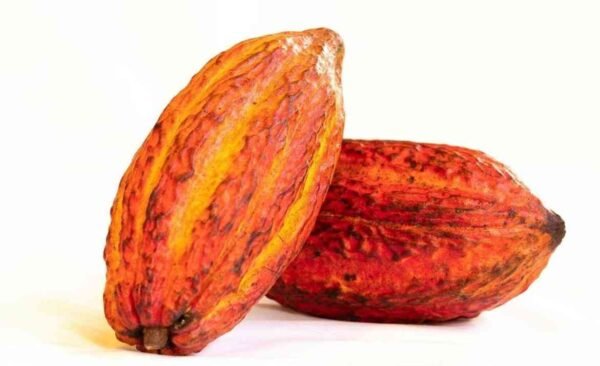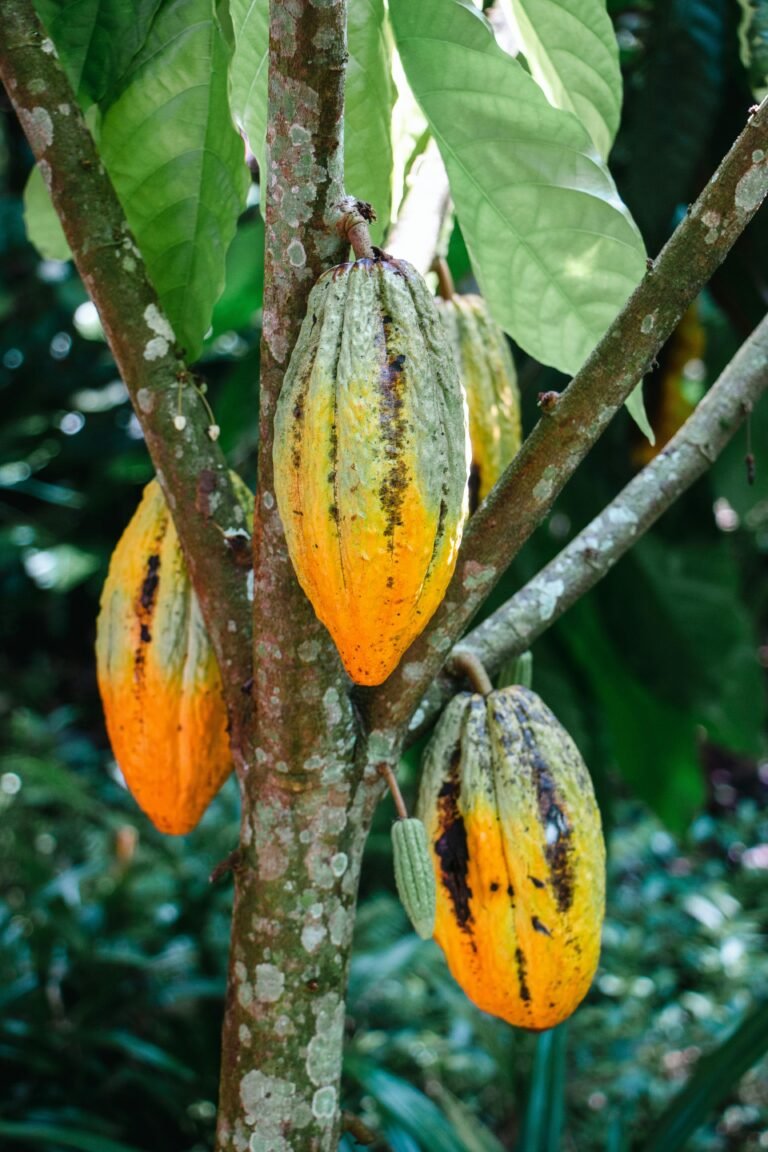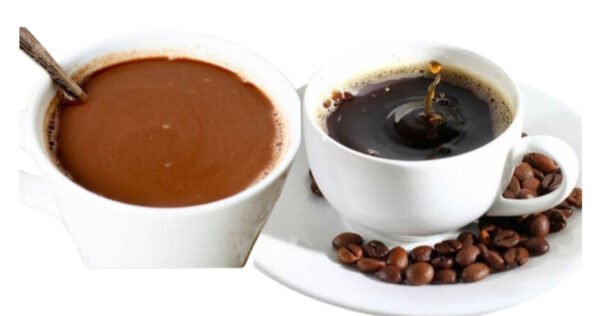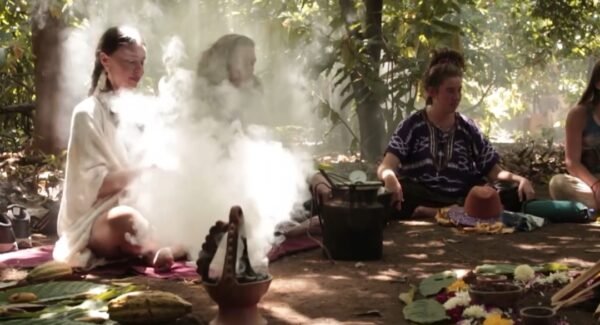
A cacao ceremony is a spiritual ritual that involves a group setting in a holy space or dedicated sacred space, where all the participants of the group consume ceremonial-grade cacao with the intention of promoting connection, healing and spiritual exploration.
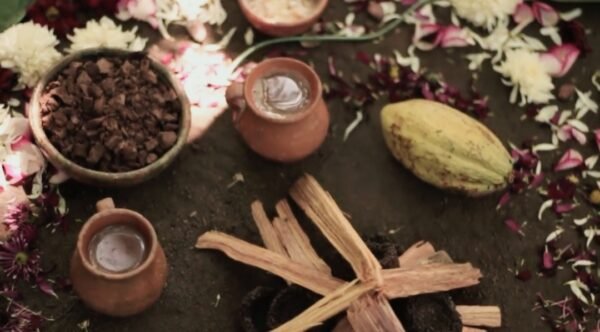
In simple words, a cacao ceremony is a group gathering with a sacred circle where ceremonial cacao is consumed, and music, breathwork, meditation can be part of the programme. The intention of a cacao ceremony is to – help you in spiritual awakening, ground you to the earth, allow you to experience oneness, open your heart, connect with your inner wisdom and connect with others.
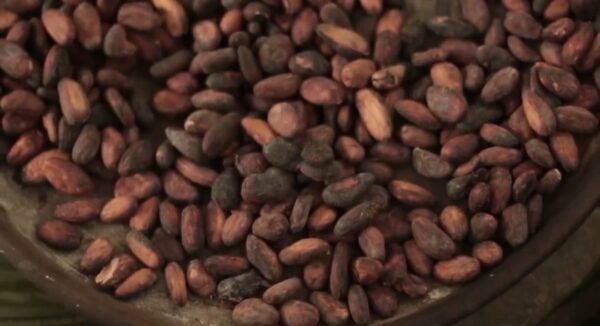
Cacao ceremonies mostly prioritize using high-quality and pure cacao beans, which means the beans are carefully selected, sorted, and cleaned to ensure they are free from defects and impurities. The selected cacao beans must be unprocessed and unroasted that can preserve their authentic and intense flavour, natural taste, aroma and all the qualities.

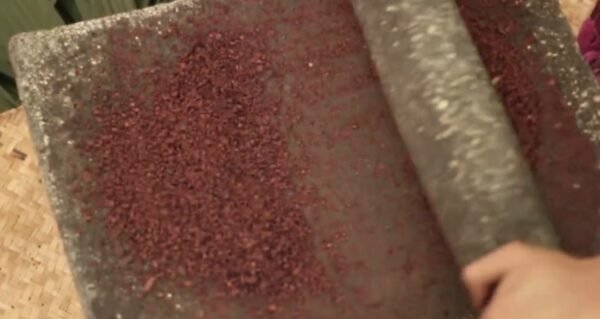

During the preparation of ceremonial cacao, they grind cacao beans using stone to make the cacao paste. They make cacao paste without removing the cacao butter, and then they make it into a cacao drink. Ceremony cacao is not sweetened. It may have a bitter flavour since it is natural and unrefined.
Ceremony cacao is also suitable for vegans.
The Best Ceremonial Cacao
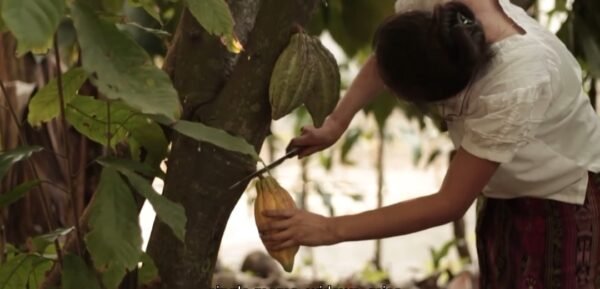
The best ceremonial cacao is the heirloom Criollo bean, which comes from the Criollo cacao tree, it’s a native species of cacao, a high-quality and very rare variety, grown only in a small percentage (5%) of the total global cacao cultivation. Most importantly, these Criollo cacao trees are often older and they are grown in an organic and sustainable way by the indigenous growers over generations to preserve their unique traits.
Origin of Cacao Ceremony
Cacao ceremony originates from ancient Mesoamerica, particularly among the Mayan and Aztec traditions and has gained popularity in modern times for its ability to develop mindfulness and self-growth.
These civilisations (Mayan and Aztec) held cacao in high esteem, using it in religious ceremonies, rituals, and medicinal practices. Cacao is more than merely a food source; it is regarded as a sacred substance that is believed to have spiritual and healing attributes.
The Mayans, for instance, considered cacao a divine gift and used it in various ceremonies, traditional rituals, spiritual festivals, etc. Cacao ceremonies were often part of broader spiritual practices, used to connect with the divine and release negative emotions, foster inner healing and help in spiritual awakening.
While rooted in Mesoamerica, the practice of cacao ceremonies has spread to other parts of the Americas, including Guatemala, Peru, Ecuador, San Francisco, and Portland, where they are now an integral part of cultural rituals.
Today, cacao ceremonies are spreading to so many different parts of the world where many people are expressing their interest in this ceremony with the intention of experiencing and seeking the emotional and spiritual benefits. Here you can read about the history of cacao ceremony.
What Does a Cacao Ceremony Involve?
There is no specific formula, but there are some elements that may be included in a cacao ceremony. Generally, a cacao ceremony is conducted by one or several individuals who are trained and have knowledge of spiritual practices; these individuals guide the ceremony from beginning to end, from selecting or organizing the sacred space and preparing the cacao to closing the ceremony. They may use various tools like music, gentle movement, breathwork, meditation, or group sharing to deepen the experience.
If you’ve received an invitation to a cocoa ceremony but you are unsure of what to expect, then here’s a detailed breakdown of what happens in a cacao ceremony:
Cacao Ceremony Preparation and Process:
- The ceremony often takes place in a quiet and sacred space, often with an altar in the middle.
- Participants sit in a circle, creating a sense of unity, light candles, use incense (sage, palo santo), or play soothing music.
- For the preparation of ceremonial cacao, first, grind the cacao beans into a fine paste, then heat water in a pot and then slowly add the cacao paste and stir continuously until it melts and combines.
- Pour the cacao into a cup, and now you can have your magical cup of ceremonial cacao (but don’t drink it yet). Close your eyes and take a deep breath. Honour and bless the cacao, set an intention for the ceremony cacao. Individuals and the group may set intentions for the ceremony, such as healing, connection, or spiritual growth.
- Take slow, mindful sips of the cacao, paying attention to the taste, aroma, and any sensations or emotions that arise.
- Breathwork, meditation, music, and gentle movement can be part of the programme, or it’s up to the person who is conducting or leading the ceremony and whatever tool they prefer to use to meet the intentions created by the participants.
- Closing the ceremony – express gratitude for the experience and blessings received; consider ending the ceremony with a ritual, prayer or a simple statement of appreciation.
I have shared a cacao ceremony video below. That video will give you a clear visual idea of what happens during a cacao ceremony.
What Are the Benefits of Cacao Ceremonies?
Cacao ceremonies, which involve the ceremonial drinking of cacao, are believed to offer numerous physical, emotional, and spiritual benefits. Nowadays, cacao ceremony is becoming a popular choice for the people who are seeking personal growth, connection, spiritual growth and healing. Some of the key benefits include:
- Emotional Healing: Cacao is believed to open the heart and help release emotional pain, emotional blockages, past traumas, negative patterns, and attachments, promoting emotional and spiritual healing.
- Build Connections: Cacao ceremony can develop a sense of relationship and unity between participants. The ceremony also fosters open communication, empathy and support.
- Enhanced Meditation and Mindfulness: Ceremonial-grade cacao can help participants achieve a deep level of meditative state that amplifies self-awareness and self-growth.
- Stress Reduction: Cacao is a good source of magnesium, a mineral that plays a vital role in regulating the nervous system and promoting relaxation. In addition to that, the ceremonies often incorporate calming practices such as meditation, breathwork, and gentle movement, which can help reduce stress and promote relaxation and calmness.
- Boost Creativity: Ceremonial cacao has been found to enhance creative thinking and improve problem-solving abilities by promoting a state of relaxation and focus.
- Physical Health Benefits: Cacao is rich in antioxidants, magnesium, potassium, zinc and other essential nutrients that can improve muscular health, brain health and cardiovascular health, promote proper blood oxygenation and cell health, reduce inflammation and support overall well-being.
- Spiritual Growth: Cacao ceremonies provide an opportunity to connect with inner wisdom, explore spirituality by facilitating deeper connection with oneself, the world, and a higher power, and experience a sense of oneness with the universe.
It’s essential to remember that individual experiences may vary, and the benefits one derives from a cacao ceremony can depend on personal intention, openness, and the specific practices included in the ritual.
The ceremony could continue for 3 to 4 hours, yet the effects might persist for several hours following the ceremony. You can tune into the wisdom and energy again by reconnecting to a quiet space. Some emotional movement may occur later after the ceremony, and this will be a good time to release and let go of the old emotions and connect to inner wisdom.
Who Should Not Do Cacao Ceremony?
Please note these ceremonies are for over-18s only.
Health factors to be particularly aware of are: if you are on antidepressants, SSRIs or other medication or have serious heart problems or are pregnant: Be aware that the theobromine in cacao is a vasodilator: it increases the heart rate and lowers blood pressure quickly. If you have those above-mentioned medical conditions, please check with your doctor first before drinking cacao.
How Much Ceremonial Cacao Should You Drink?
Generally, for a standard ceremonial cacao experience, a dose of 40-50 grams is recommended; however, some individuals may find even 20-30 grams sufficient for a meditative or deeply mindful experience. If you are a beginner, then it’s best to start with a smaller dose, and then you can gradually increase it to find what works best for you.
It is advisable not to consume ceremonial cacao doses above 50 grams. If you consume cacao above these doses, it may cause bloating, headaches, nausea, sweats or even heart palpitations for a small percentage of people.
I hope you are now clear about the concept of a cacao ceremony, right? You can watch the video I have shared below to get more visual clarity about cacao ceremony.
You may also like to read

